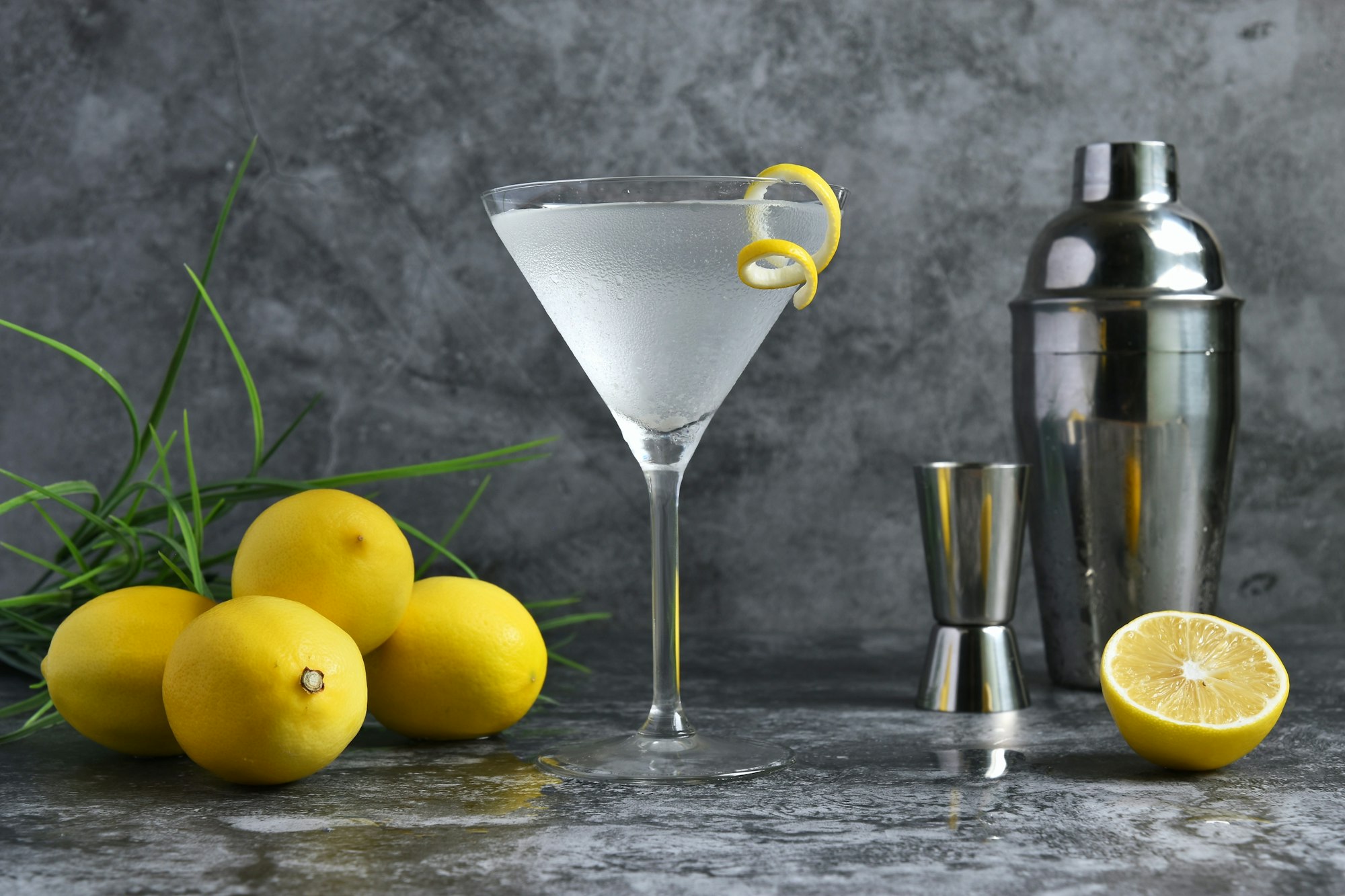Introduction To The Art Of Martini Making: Shaken Or Stirred?
The age-old debate of whether a martini should be shaken or stirred transcends mere preference, delving into the artistry and science that define this iconic cocktail.
Martini making is an elegant dance of precision and personal touch, where the choice between shaking and stirring significantly influences the drink’s texture, temperature, and taste.
Shaken martinis boast a vibrant chill and a slightly aerated body, appealing to those who favor intensity and a dash of theatrics in their sip.
Introduction To The Art Of Martini Making: Shaken Or Stirred?
Conversely, stirred martinis offer a silky smoothness with undisturbed clarity, catering to purists who appreciate subtlety in flavor.
Mastering both techniques opens up a realm where tradition meets innovation, allowing every martini enthusiast to craft their perfect rendition of this classic concoction.
The History Behind The Martini: Origins And Evolution
The martini, an emblem of cocktail sophistication, boasts a storied past shrouded in mystery.
Its origins are contested; some narratives trace its birth to the mid-1800s in California where a miner, victorious with gold, sought a special drink.
Others suggest its name derives from Martini & Rossi, an Italian vermouth brand established in the 1860s.
Initially concocted with gin and vermouth, the martini has since undergone significant evolution.
The History Behind The Martini: Origins And Evolution
The proportions of its components have varied widely over time, reflecting changing tastes and cultural influences.
From the dry versions favored in the early 20th century to James Bond’s iconic “shaken, not stirred” preference, the martini has remained a timeless symbol of elegance and refinement.
Understanding Ingredients: A Guide To Gin And Vermouth Selection
In mastering the art of martini recipes, understanding and selecting the right gin and vermouth is paramount.
Gin, with its botanical complexity ranging from juniper-heavy to floral or citrus-infused profiles, lays the foundation.
The choice between a dry, London style or a more aromatic New Western type can significantly alter your martini’s character.
Vermouth, on the other hand, brings a nuanced layer of flavor — from sweet to dry, with herbal undertones that complement or contrast the gin’s botanicals.
Understanding Ingredients: A Guide To Gin And Vermouth Selection
The interplay between gin’s robustness and vermouth’s subtlety is where the magic of a martini lies.
Thus, knowing your ingredients’ profiles ensures not just any martini but your perfect martini.
To Shake Or To Stir: Unraveling The Mystery For The Perfect Martini
The debate between shaking or stirring a martini is a classic conundrum that has stirred (pun intended) spirited discussions among cocktail aficionados.
Shaking, as famously preferred by James Bond, introduces air into the mix, resulting in a slightly cloudy appearance with tiny ice shards that briskly cool the drink.
On the other hand, stirring is the traditionalist’s choice for achieving a crystal-clear concoction that’s silky in texture.
To Shake Or To Stir: Unraveling The Mystery For The Perfect Martini
The decision ultimately hinges on personal preference and the desired outcome – whether you favor the vibrant chill and dilution that shaking imparts or the smooth, undisturbed elegance of a stirred martini.
Mastering both techniques allows enthusiasts to skillfully navigate this age-old dilemma, crafting their version of the perfect martini.
Technique Matters: Step-By-Step Guide To Shaking A Martini
Mastering the art of shaking a martini is not just about combining ingredients; it’s a delicate dance that, when performed correctly, yields a drink that’s both invigorating and smooth.
Start by filling your cocktail shaker halfway with large ice cubes to ensure even chilling without over dilution.
Pour in your gin or vodka, followed by dry vermouth according to your taste preferences.
Technique Matters: Step-By-Step Guide To Shaking A Martini
Secure the lid tightly and hold the shaker with both hands, one on each end.
Shake vigorously in a horizontal motion for about 15 seconds; this action not only chills the drink but also introduces tiny air bubbles, giving the martini its characteristic frothy appearance.
Strain into a chilled martini glass and garnish as desired for a perfect serve.
Mastering The Stir: How To Perfectly Blend Your Martini
Mastering the art of stirring a martini is akin to a delicate dance, where precision and grace lead to perfection.
Contrary to the vigorous shake, stirring a martini is about gently coaxing the ingredients to blend seamlessly, preserving the clarity and subtle nuances of the spirits.
The key lies in using a long-handled bar spoon, gliding it around the contours of a mixing glass filled with ice, in a rhythmic motion that chills without diluting.
Mastering The Stir: How To Perfectly Blend Your Martini
This technique ensures that the vermouth melds flawlessly with the gin or vodka, creating a smooth, silky texture that’s paramount for an exquisite martini.
Perfecting this method elevates not just the drink but also the drinker’s appreciation for the craft behind cocktail making.
Variations On A Classic: Exploring Different Martini Recipes
The martini, a cocktail shrouded in sophistication and mystery, offers a canvas for creativity, allowing enthusiasts to explore beyond its classic gin and vermouth roots.
This exploration begins with the base spirit; while purists might lean towards gin for its herbal complexity, vodka presents a cleaner, more neutral option.
Vermouth ratios then become a playground of taste—ranging from the dry whispers in a Dry Martini to the more pronounced vermouth presence in a Wet Martini.
Variations On A Classic: Exploring Different Martini Recipes
Adventurous palates venture into flavored martinis, introducing ingredients like espresso or citrus liqueurs, crafting concoctions that both challenge and delight.
Stirred or shaken, each variation on the classic martini recipe offers a unique glimpse into the artistry of cocktail making.
Garnishing With Style: The Final Touches For Your Perfect Martini
Garnishing your martini is not merely a decorative afterthought; it’s a rite of passage into the artistry of cocktail creation.
The choice of garnish adds a nuanced layer, enhancing both the visual allure and the flavor profile.
For a classic touch, a twist of lemon peel gently rubbed around the rim introduces an aromatic citrus note, subtly altering the martini’s character.
Garnishing With Style: The Final Touches For Your Perfect Martini
Olives, steeped in their briny elegance, offer a savory counterbalance to the spirit’s sharpness, while cocktail onions usher in a crisp, piquant dimension.
This final flourish is your signature – an expression of creativity and finesse that transforms each martini from merely mixed to masterfully crafted.

